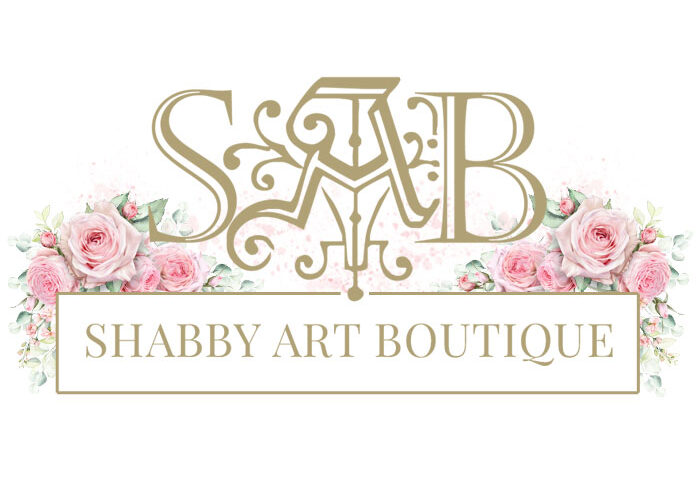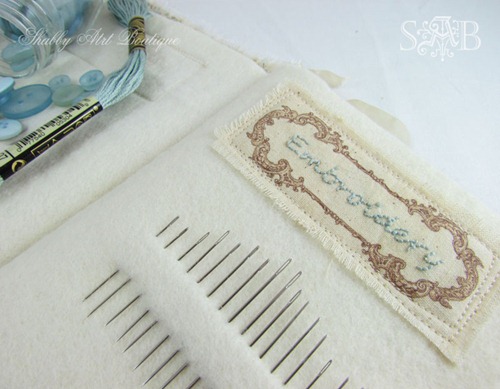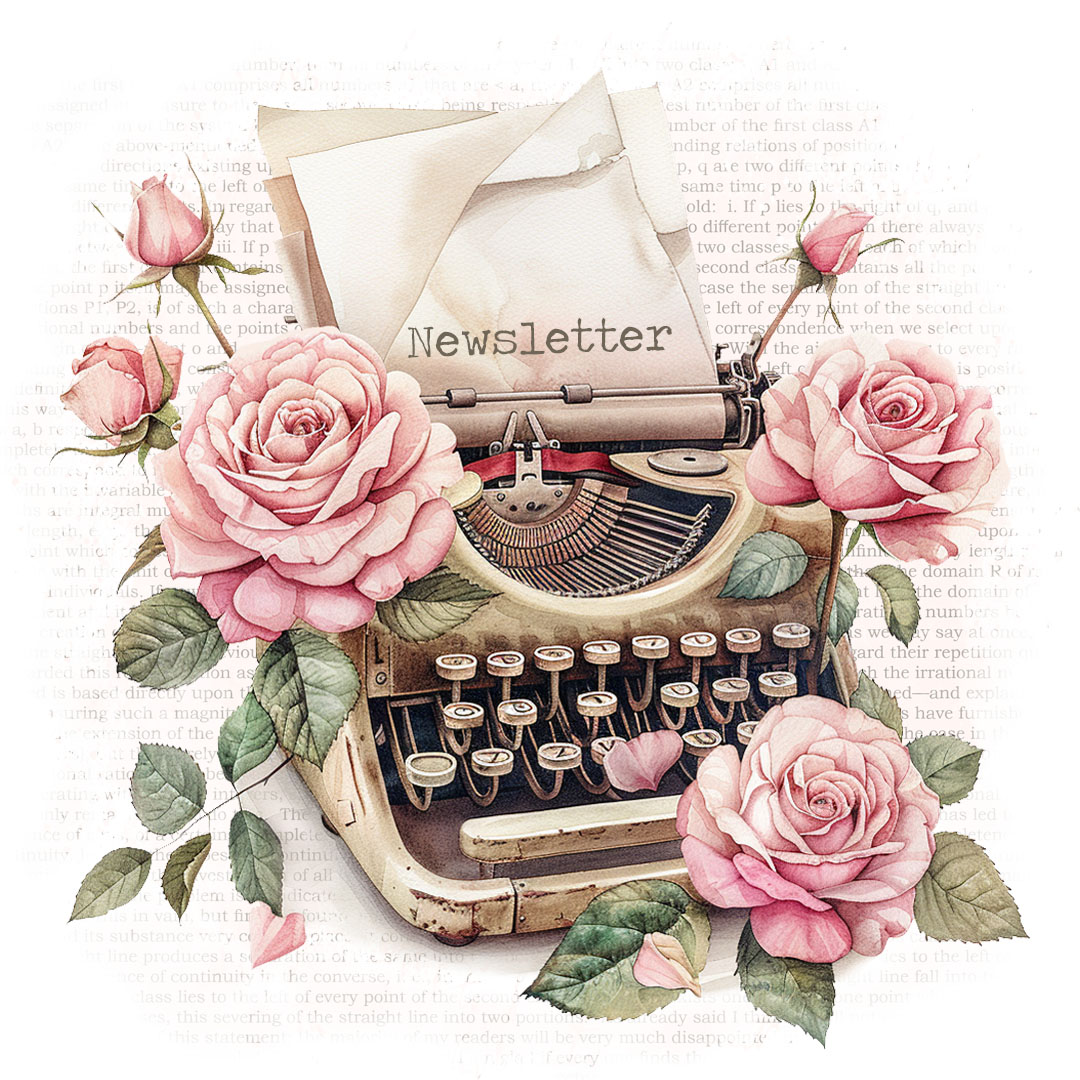Aahhh. . . the humble sewing needle. . .
Not a particularly interesting implement and to the novice sewer, one needle pretty much looks the same as the next. . .
Until you look a little closer that is.
With several students learning to sew in my Creative Craft classes this term, I’ve headed back to basics and having the right tool for the right job is a good place to start.
I designed this vintage inspired needle book to store and separate the different types of needles.
Hand sewing needles come with different names depending on what their purpose is and in a range of different sizes.
I always find the sizing of needles a tad strange. . . who would have thought – the smaller the size written on the needle packet, the larger the needle!
Here’s some of the basics I have in my needle book:
Sharps:
Sharps are a basic multi purpose needle, of medium length, sizes ranging from 1 to 10 with a sharp point, a small rounded eye just large enough to accommodate thread and most commonly used for hand sewing. I tend to use these babies the most!
Ball-point Needles:
Ball point needles have a rounded tip, so they’re perfect for sewing knit fabrics. A sharp pointed needle can easily damage the knit fiber by poking though a thread and leaving a ‘pull’ in the the knit fabric. A ball point, on the other hand, will pass right through the knitted stitches.
Embroidery:
Embroidery also known as Crewel needles are very similar to the sharps as they have sharp points however their main difference being in the eye. They have large oval eyes to make threading multiple embroidery flosses or thicker yarns easier to pass through.
Betweens or quilters Needles:
Betweens or quilters needles are much shorter and a bit thinner than the sharps, with a small rounded eyes. Their overall thinness and small eye help them pass easily through heavyweight fabrics, making them perfect for sewing fine stitches when tailoring, quilt making and other detailed stitching.
Chenille Needles:
The Chenille Needle is similar to a tapestry needle as it has the same long oval eye and comes in the same sizes (thickness) except it has a sharp point. Chenille needles are ideal for ribbon embroidery and other crafts that need to pull a thick strand through a closely woven fabric.
BeadingNeedles:
Beading needles are very fine, with a narrow eye to enable it to fit through the centre of beads and sequins. They are usually long so that a number of beads can be threaded through at the same time.
Doll Makers Needles:
The Doll Makers Needle or sculpturing needle comes with either a sharp point or a blunt tip and is available from short to extraordinarily long. Doll needles are used for the soft sculpturing of dolls, particularly facial details.
There are quite a few more needles that cover other less often required jobs like Tapestry needles, Darning needles, Milliners needles and Upholstery needles. . . but I think we’ve covered the basics today.
So now that you know a little more about needles. . . let’s get stitching!
Happy sewing ~ Kerryanne









What a beautiful needle-case Kerryanne.
I remember my needlecraft teacher was always very particular about using the correct needle for the job. Unfortunately, I wasn’t very quick to ‘hide’ my needles when I got married and ended up with a mish-mash of alsorts where hubby would help himself to what ever came to hand first. I don’t do a lot of sewing these days but do have a small selection of needles that I keep out of the hands of the other-half otherwise I’d never find a needle LOL
Toni xx
Great information that everyone should know. That certainly is a gorgeous needlecase!
Gorgeous Kerryane ! I though making one book with differents stitches but not needles, that’s a great idea !!!! Congrat for shabby style so romantic !
Mirevan from Chambéry
Hi Kerryanne!
Thank you so very much for participating in the blog hop! Wishing you much success in your bloggy endeavors. Excited new follower 🙂
Kelly
http://www.livelaughrowe.com
How beautiful, this is a very delicate looking needle book. Are you also a photographer? The way you have presented it alongside the roses looks like it would be at home in Homes and Gardens magazine. I found this all very interesting…I really didn’t know there are so many needles.
Hi Kerryanne. Your needlebook is gorgeous. What a great idea to keep the different needles separated. Thanks for explaining the differences between the needles.
This is such a creative idea! I would love for you to stop by my Linky party via: ourdelightfulhome.blogspot.com
lMrs. Delightful
ourdelightfulhome.blogspot.com
Very beautiful! Great work.
It’s perfect!
So lovely, and a useful idea.
Julie.C x
oh! you make it sound so easy! but i assure you…i am sewing impaired! ;} {i had NO idea there were truly SO many different types of needles! how very interesting!}
m ^..^
I remember reading a story once about how precious sewing needles were to the pioneers…something we take so for granted now had immense importance in the past. Fascinating post.
That is so stinkin cute. Love it.
adorable! Love the soft colors of graphic on front.
blessings
barbara jean
well well done. i embroidery but you do it far better. elizabeth
we have a site if you would check us out
thegreeleygirls.com
Your needle book is so pretty! I had one of these at one time and I’m not sure what happened to it. I need to make myself another one. Thanks for the inspiration.
Your book is absolutely beautiful. And I love how you have explained each one. It reminds me so much of my grandmother who would use needles for all her sewing and crafts. She is now deceased but you brought back many wonderful memories of my dear ‘Nana.’ I want to make one now and thankyou for the inspiration. I saw this photo on Home Sweet Home linky party and just had to come see. So glad I did. You have a lovely blogm and I am going to follow you.
Nann
Just love this! Wishing it was mine!
Well done!
I have wanted one of these for as long as I can remember. Now I just want your one, it is so beautiful. Thanks you for sharing. Cheers SpecialK XoXo